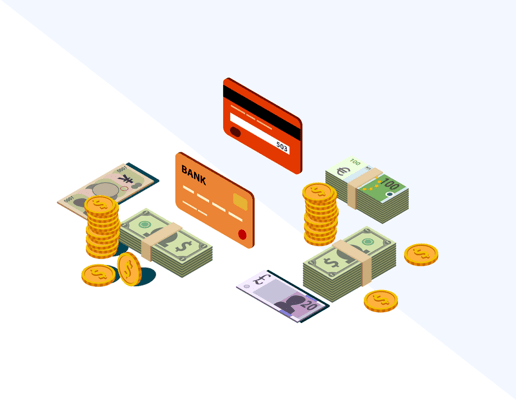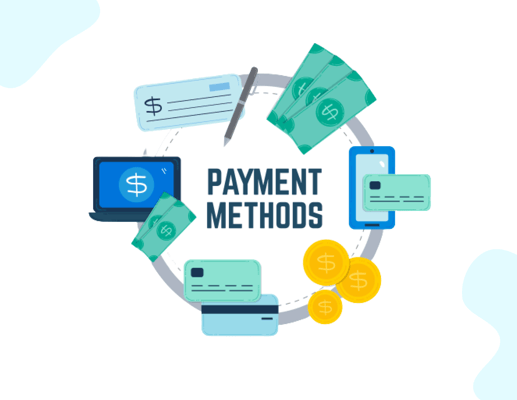Cart and checkout abandonment (rate) are two of the most crucial and closely related metrics eCommerce businesses must watch. Failing to do so could result in lost customers and significant financial losses. These metrics go hand in hand and require careful attention to ensure customer retention and profitability.
In this blog, we'll explore the thin line between cart and checkout abandonment, why customers leave your website at different stages, and how to minimize this. So, read in full.
Cart Abandonment vs. Checkout Abandonment
Customers add what they like to their cart after comparing different products. However, instead of moving to the next step, checkout, the customers bounce off the website for several reasons. And this phenomenon is referred to as cart abandonment.
Suppose the shopper adds a product to their cart and moves to the checkout option. However, if the shopper initiates the checkout process, for some reason, doesn't successfully pay for the item, it's checkout abandonment.
Here's a tabular differentiation between cart abandonment and checkout abandonment for a better understanding:
| Factors |
Cart Abandonment |
Checkout Abandonment |
| Definition |
Cart abandonment is when a shopper adds an item to their cart but doesn’t checkout and bounces off the website. |
Checkout abandonment is when the customer moves to the next step after adding the product to their cart. But they don’t make the purchase and abandon at checkout. |
| Reason |
A poor website, asking for too much information, limited shipping options. |
Not enough payment options, payment decline, added charges and more. |
| Level of Intent |
A lower level of buying intent. |
Higher buying intent. |
| Order |
If at all, cart abandonment happens after the product has been added to the cart. |
This happens when the customer interacts with the checkout screen. |
A Typical Buyer's Journey
Pre-purchase
The buyer's journey begins with the potential buyers searching for a product online or clicking on an advertisement. After that, they visit your website, browse different pages, and compare various products until they find their ideal pick which fits their budget. Once they choose their product, customers add it to their shopping cart.
Pro Tip: To smooth this step of the buyer's journey, you only need a well-crafted website with a decent UI, easy navigation, and fast loads.
Checkout
The next step is checkout once the shopper adds a product to their cart. It's a crucial step as the customer is asked to create their account, and if they haven't already, enter shipping and payment details. Also, during this step, the customer enters discount coupons, if any, and checks the agreement boxes.
Pro Tip: This step should involve the least friction and offer customers a seamless purchase experience.
Payment
The customer confirms their purchase and pays after entering their information on the checkout page. All the shopper expects at this point is a confirmation message stating their order has been placed. Any hiccup during this step can cost you a customer.
Confirmation
Different checks on the background take place before the confirmation is sent. If everything goes as expected, the customer gets a confirmation message, and the merchant can ship their order.
Average Cart and Checkout Abandonment Rates
The average checkout abandonment rate lies anywhere between 60-80%. On the other hand, the average cart abandonment rate is 69.99%. Any figures surpassing these norms should be addressed immediately.
If you're wondering, here's how you can calculate cart and checkout abandonment rate to determine how you're doing:
Cart Abandonment Rate: total number of transactions completed/ total number of carts filled * 100
Checkout Abandonment Rate: total number of completed transactions/total number of carts filled * 100
What Should Businesses Focus on Cart Abandonment or Checkout Abandonment?
Shopping cart abandonment is when the customer can't make a purchase decision. And this can happen because of numerous reasons, such as slow loading time, unnecessary popups, too much information to fill in, etc. And this can be dealt with by making minor tweaks.
On the other hand, in checkout abandonment, the customer has made the "purchase" decision, and they're convinced to buy and have a high buying intent, yet they don't end up paying. Now, this is something you need to have a close look at.
Ideally, you must also work on both cart and checkout abandonment. Not doing so can directly impact the revenue you generate. However, checkout abandonment requires more effort and attention than cart abandonment.
Top Checkout and Cart Abandonment Reasons
Here's why checkout and cart abandonment happen:
Reasons Behind Cart Abandonment
%20(1).png?width=1500&height=1615&name=Infographic%20-%201%20(7)%20(1).png)
Here are the probable reasons that lead to cart abandonment:
-
Additional expenses: Customers often hate it when it comes to paying Anything extra other than the product's actual price.
-
Shady Experience: If the customer finds your website insecure or shady, they're likely to abandon the cart, as there's a risk of fraud.
-
Rigid Shipping Options: If the order takes too long to deliver or there are other hiccups related to shipping, the customers may bounce off.
-
Uncontrollable Factors: Often, the customers are just researching, adding products to their cart but ultimately changing their decision.
-
Speed and Performance: If the web pages take quite a long time to load, it can lead to a poor customer experience. Also, if your website crashes or encounters an error, it may also lead the customer to leave.
Reasons Behind Checkout Abandonment
%20(1).png?width=1500&height=1995&name=Infographic%20-%202%20(8)%20(1).png)
Here are the probable reasons that lead to checkout abandonment:
-
Unexpected Transaction Fee: Any unexpected fee, be it shipping or transaction fee, can turn the customers away.
-
Too Many Steps: If the checkout process is long and clumsy, the customers might get distracted and change their buying decision.
-
Too Many Fields: If your checkout page asks for too much information, it can irritate the customers, making them leave your website.
-
Lack of Preferred Payment Options: If you don't have enough payment options or methods to offer, it can become an obstacle in the purchase.
-
Security Badges and Credit Cards: Using high-end graphics displaying banking and other badges will positively impact the customer.
-
Payment Declines: Regardless of who's responsible, customers are unlikely to retry the payment if there's a decline.
-
Too Many Security Checks: While security is essential, too many security checks can annoy customers.
-
Remarketing: Displaying additional products at the time of checkout can irate your customers, which can hinder the sale.
How to Engage Your Customers and Reduce Cart and Checkout Abandonment?
Here are some tips that you can use to reduce cart and checkout abandonment rates:
-
Remove any additional fees or charges at the time of checkout.
-
Offer guest checkout and let the customers buy without creating an account.
-
Make the checkout experience quick and seamless.
-
Ensure your website loads fast and has a good UI and smooth navigation.
-
Implement payment security but limit the number of checks.
-
Use payment analytics to understand the risks and exempt low-risk customers.
-
Offer a seamless experience across all devices.
-
Make customer support easily accessible.
-
Integrate orchestrators like inai to offer multiple payment methods, a personalized checkout experience, and minimize declines.
Wrapping Up
A high cart and checkout abandonment rate indicate your customers are dropping off and not purchasing from you. And this further shows something needs to be fixed.
So, the first step should be tracking these metrics (cart and checkout abandonment rate). After that, you should analyze the data, identify potential culprits and make small tweaks or improvements. And then repeat the entire process. This way, you can slowly improve and reduce cart and checkout abandonment and plug any revenue leakages.
.png?width=123&height=71&name=inai%20logo%20-%20dark%201(1).png)
.png)
-1.png?width=1500&height=1160&name=A%20Typical%20Buyers%20Journey%20(1)-1.png)
%20(1).png?width=4068&height=1080&name=CTA%20(10)%20(1).png)
.jpg?width=150&name=IMG_5672%20(1).jpg)




.png?width=50&name=karthik%20(1).png)